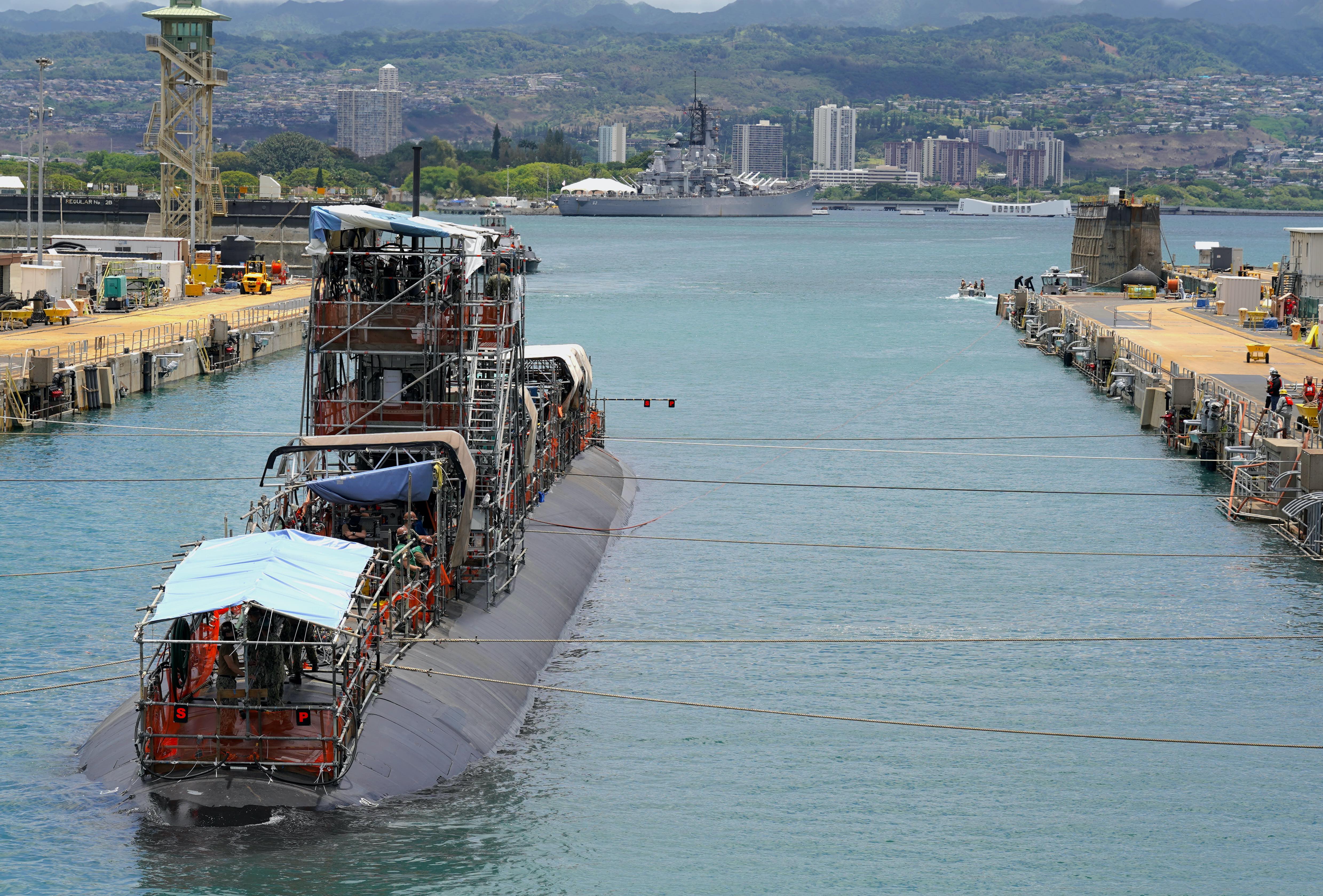
The sailor who killed two civilian shipyard workers and them himself at a repair yard in Hawaii had shown signs of “long-developing problems that in aggregate should have raised concerns about his mental condition,” which would have likely disqualified him for submarine service, according to an investigation into the Dec. 4 incident that was released on Tuesday.
Machinist Mate Auxiliary Fireman Gabriel Romero, 22, had struggled with emotional and disciplinary issues while assigned to the Los Angeles-class attack submarine USS Columbia (SSN-772), according to the command investigation into the shooting at the Dry Dock 2 at the Pearl Harbor Naval Shipyard.
On the day of the shooting, Romero reported for duty at a little after 2:00 p.m. with no signs he was under distress. In the hours before, he had spent time with his girlfriend, worked on getting an apartment and underwent small arms sustainment training. After relieving the previous sailor from armed security duty, taking his M4 carbine and his M9 pistol and signing in on the log, Romero told the petty officer in charge “I’ll be right back.” Romero then turned and began walking behind three shipyard workers by the dry dock and fired his M4 when he was about 20 feet away. He shot the workers, killing Vincent Kapoi and Roldan Agustin. Romero then took his own life with his sidearm. The investigation determined Romero acted alone in the shooting that lasted only seconds.
Investigators found warnings signs that Romero may not have been fit to serve in the months ahead of the shooting that were not woven together by his leaders. While Columbia was in dry dock, Romero had visited the Navy’s embedded mental health program (eMHP) eight times for a variety of issues, including feelings of hostility from other crew members, lack of advancement in the Navy and worry over a person close to him who was in poor health. In late September, after a string of performance issues, senior enlisted leadership on Columbia arranged for Romero to see the force psychologist to whom Romero was assigned, who diagnosed him with “phase of life problems” and “unspecified problem related to unspecified psychosocial circumstances.” Romero was in turn referred to a “behavioral health technician, a non-licensed Navy enlisted (E-5) corpsman” that provided counseling on managing Romero’s myriad issues.
The results of those visits were not properly relayed up the chain of command to inform leadership of Romero’s mental health issues, concluded the investigation.
“The investigation team determined that Romero had long-developing problems that in aggregate should have raised concerns about his mental condition, and his maturity, stability, and dependability,” reads the report reviewed by USNI News.
“If these risk factors would have been shared among medical providers and the USS Columbia chain of command before Dec. 4, 2019, the Navy may have interrupted the chain of events that led to this tragedy.”
Specifically, the report singles out that leadership did not renew Romero’s screening to carry out the armed security detail as a result of his change in health, a vaguely defined requirement in Navy regulations.
“He was not rescreened on that basis despite risk factors known to the Navy including his mental health; his concern over his [redacted] health issues; two single motor vehicle accidents (motorcycle and car) within a year; general isolation from his shipmates; delinquent qualifications; repeated counseling; a disciplinary review board (DRB); a failure to advance to E-4; and an executive officer inquiry (XOI) the day before the shooting,” reads the report.
“If shipmates would have reported these indicators to supervisors, the chain of command may have aggregated them with other known risk factors to recognize that circumstances warranted his rescreening for armed watchstanding.”
In addition to the generalized mental issues, “Romero showed signs of an undiagnosed mental disorder that likely would have disqualified him from submarine duty,” reads the investigation.
In a separate section of the report, a clinician that reviewed Romero’s case after an emergency room visit reported that he likely an undiagnosed case of attention deficit disorder. Having a diagnosed case of ADD is disqualifying to serve in submarines, USNI News understands.
The results of the investigation are prompting the Navy medical community and the Pacific submarine force to reevaluate how they conduct mental health screenings for submariners.
“As a result of the investigation, SUBPAC is conducting a comprehensive review of the eMPH program and how to better communicate medical treatment while respecting patient privacy, “ U.S. Pacific Fleet spokesman Cmdr. Myers Vasquez told USNI News in a statement.
Lessons from the investigation in Hawaii are being combined with a separate investigation into the shooting at Naval Air Station Pensacola, Fla., which occurred days later when a Saudi flight student with ties to terror groups in the Middle East killed three sailors. The results are set to inform the Pentagon’s insider threat evaluation program.
Those results and improvements to the Pentagon’s insider threat posture are set to be issued later this year.
Suicide Prevention Resources
The Navy Suicide Prevention Handbook is a guide designed to be a reference for policy requirements, program guidance, and educational tools for commands. The handbook is organized to support fundamental command Suicide Prevention Program efforts in Training, Intervention, Response, and Reporting.
The 1 Small ACT Toolkit helps sailors foster a command climate that supports psychological health. The toolkit includes suggestions for assisting sailors in staying mission ready, recognizing warning signs of increased suicide risk in oneself or others, and taking action to promote safety.
The Lifelink Monthly Newsletter provides recommendations for sailors and families, including how to help survivors of suicide loss and to practice self-care.
The Navy Operational Stress Control Blog “NavStress” provides sailors with content promoting stress navigation and suicide prevention:
NavStress social media:
Facebook: www.facebook.com/navstress
Twitter: www.twitter.com/navstress
Flickr: www.flickr.com/photos/navstress





